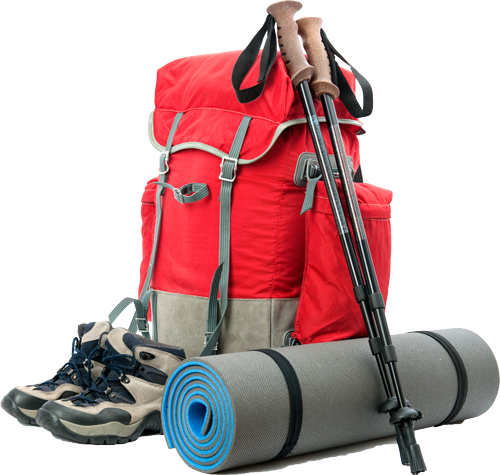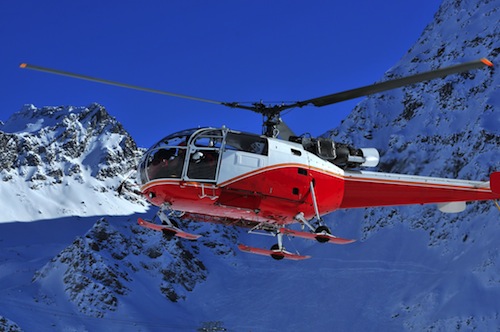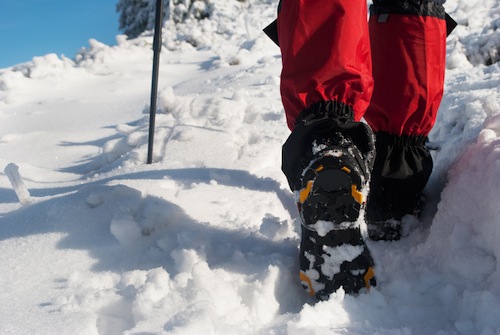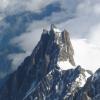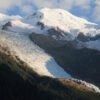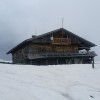Travel Planning
Traditionally the start of the Mont Blanc circuit is at Les Houches which is only a few kilometres from the centre of Chamonix. Geneva International airport is the closest international port to Chamonix being approximately 1.5 hours drive away. If you are not transferring from Geneva by vehicle there is also train and bus services available. The local bus service takes about 2.5 hours the train takes about 3.
The train is the cheapest option but does require two service changes and takes the longest amount of time. There are also plenty of private transfer companies which are the most efficient option as they will take you straight to your accommodation from Geneva airport but these do require pre booking ( see Transfer companies). Expect to pay around 25 -40e pp for a shared vehicle transfer, more for a private one.
Fitness & Training
The Tour de Mont Blanc is undeniably a challenging walk and we highly recommend adequate fitness training to ensure that you get the most enjoyment out of your trek and that you can complete each stage. The Tour de Mont Blanc requires a reasonable level of fitness and suitable walking experience. If you are trekking independently and carrying your own pack then you will also need to be more fit & self reliant than if you were part of a supported group. If you are thinking about walking the circuit and want to get advice before you book anything speak to one of the trekking specialists at RAW Travel, who can advise on aspects of the walk and whether you’d be suited to it.
While there are options of cable-cars and chair-lifts, where available, to bypass a couple of the more difficult ascents and descents this should not be relied on as a way to bolster an underlying lack of trekking fitness. If choosing these options, when planning your trip, please note that they tend to only be operational during the seasonal months of June to September and do have closing times of around 5pm. Regardless of using the cable-cars and chair-lifts it is important to be as fit as possible as each stage has its own challenge. Along with steep ascents and descents there will also be sections of exposed footpath and so you should be comfortable and experienced with hill / mountain walking – this is not the place to start for a complete novice! In some sections above Chamonix there are short lengths of metal rungs and ladders or fixed cables and chains to aid in steep challenging pitches – though there are usually alternatives if you need to avoid these.
Clockwise or Anti-clockwise?
The Tour de Mont Blanc is traditionally walked in an anti-clockwise direction due to the following reasons:
– Orientation of the best views
– Better positioning of the long and difficult climbs
– The way-marking can be more obvious in the anti-clockwise direction
You can choose to walk in the clockwise direction and the advantage of this may be that you miss walking with the crowds during the day and see new faces at the refuges each night, although if starting in Les Houches a disadvantage is an ascent of 1500m on your first day of walking.
What to Bring?
Obviously if you are planning to camp along the way you will need to carry extra weight which will include your camping gear but as a rule some general considerations for things you will need to take with you are:
– Sleeping bag liner (not all Refuges require these but it may be a comfort item if just provided with a blanket or duvet)
– Waterproof jacket and pants
– Sunscreen, hat, sunglasses and gloves
– Head torch (and spare batteries)
– Water bottle (or bladder)
– Comfortable, worn in, quality walking boots
– Rucksack and waterproof cover
– First aid kit (including blister treatment)
– Enough Euros to pay for food, supplies and accommodation (Swiss Francs not required as Euros widely accepted)
– Guidebook and map
– Toiletries, travel towel and toilet tissue (biodegradable)
– Food, water and snacks to last between overnight stops
– Dry clothing and footwear to change into a night
– Trekking poles (available for purchase or hire in Chamonix)
– Crampons and gaiters (weather dependent)
Safety & Weather
There are very few exposed or dangerous sections along the track and approached with care pose few concerns for the majority of experienced walkers. It is best to set off early on each days walking as weather can always be unpredictable and setting off in the morning will mean that you will be walking in the cooler part of the day with the greatest chance of clear views. Early in the season you will most likely find snow on the ground the higher up you are and caution should be taken in these sections. Weather in the Alps can turn at any time of year and you may experience snow fall above 2000 metres. Afternoon thunderstorms are common during June and July, this is another reason for starting your daily journeys early, and remember to always check weather forecasts.
Chamonix Weather Forecasts
You should always make sure that your travel insurance covers emergency mountain rescue – this may not always be a standard feature on some policies so talk to your insurer and see you have an adequate level of cover as emergency rescue is very expensive!
What to do in an Emergency?
Below is the emergency numbers for each country:
Italy 118 (or the emergency number 112)
France 112
Switzerland 144
Civil Protection (I) 800.319.319
PGHM Chamonix (F) +33(0)4.50.53.16.89
What counts as an emergency?
A situation is defined as an emergency whenever human life (yours or someone else’s) is endangered and there is nothing you can do to resolve the matter on the spot
When to call for help
Calling for emergency services help is justified in the following situations:
- you are in the presence of accident victims (who have broken bones, serious injuries or open wounds…)
- you are trapped somewhere after a fall or a change in the terrain (a cliff, very steep gradient, ice…)
- you are lost or in trouble and are unable to continue because of the time of day or other conditions
- you are trapped by objective dangers (severe weather changes, rockfall, avalanches…)
- you are trapped because of technical climbing challenges that exceed your capabilities
First of all: do not panic – stay calm and survey the situation. Do not take useless risks if the people in trouble are difficult to reach.
What to do first
- protect the victim from cold and other environmental threats
- survey the victim’s condition and the general situation
- administer first aid, if you can
Calling for help
Be clear and concise and provide the following information when speaking :
- location (altitude, geographic features, distinctive clothing that could facilitate localization)
- number of victims and types of injuries
- your name and cell phone number, if relevant
If you are there when the rescue team arrives:
- signal your position clearly by holding your arms open in a Y-shaped posture
- secure any objects that the helicopter might blow away when it arrives
- when the helicopter arrives, stay still until it comes to a complete stop and the rescue team disembarks
Do not give up if the rescue team runs late, hold tight and take cover.
Some helpful facts:
- The conventional signal for helicopters is: standing motionless with your arms forming a Y
- The visual-acoustic signal is: 1 signal every 10 seconds for 1 minute
- Check for any objects in the area that could be blown away by the helicopter’s rotor blades.
- As the helicopter approaches, crouch down and stay still until the rescue team disembarks.
Snow
Trails can be covered with a considerable amount of snow even early in the season. Beware of slipping hazards – if possible, bypass snowfields if they have even a minor slope and bring the proper equipment: crampons, ice-axe, telescoping poles, snow leggings.
Another snow-related risk concerns difficulties getting oriented: heavy snowcover can hide trail markings and make it difficult to find reference points and landmarks, especially during bad weather. Use a compass and a map or even a GPS.
Caution – following the tracks of other hikers can lead you even farther off the trail!
Keep in mind that waterways can be covered by snow bridges that may collapse under the weight of one or more excursionists, so be careful whenever hiking near rivers, streams and gullies where water could wash down from snowfields. When a snow bridge has to be crossed, a safety line is recommended.
Other dangers on the Mont Blanc trail
Strong sunlight: You are exposed to more UV in the mountains than in lower altitudes, so while it’s pleasant to hike in shorts and T-shirts in warm weather be aware that you can quickly burn and get skin damage.
- Wear UV filter sunglasses;
- Always use high protection sunblock;
- Avoid prolonged direct exposure of the skin to the sun (do not take naps in the sun or lay out to work on your tan);
- Take care of particularly exposed body zones (face, ears, neck, scalp, hands).
Fog and clouds
Low clouds and fog are very common in mountain environments and can occur at any time of year. Fog especially can be very disorientating and especial care should be taken if heading into the mountains in these conditions – it is much safer to walk in a group with other people and take precautions:
A compass, a map and an altimeter (and being sure you know how to use them) as well as a rescue whistle are handy in dangerous situations and can keep you from wasting significant amounts of time.
In the presence of fog, proceed as a group and follow the trail signs meticulously (even if you already know the way). When visibility is down to a minimum, stop and wait for better conditions instead of venturing out with risky walks.





